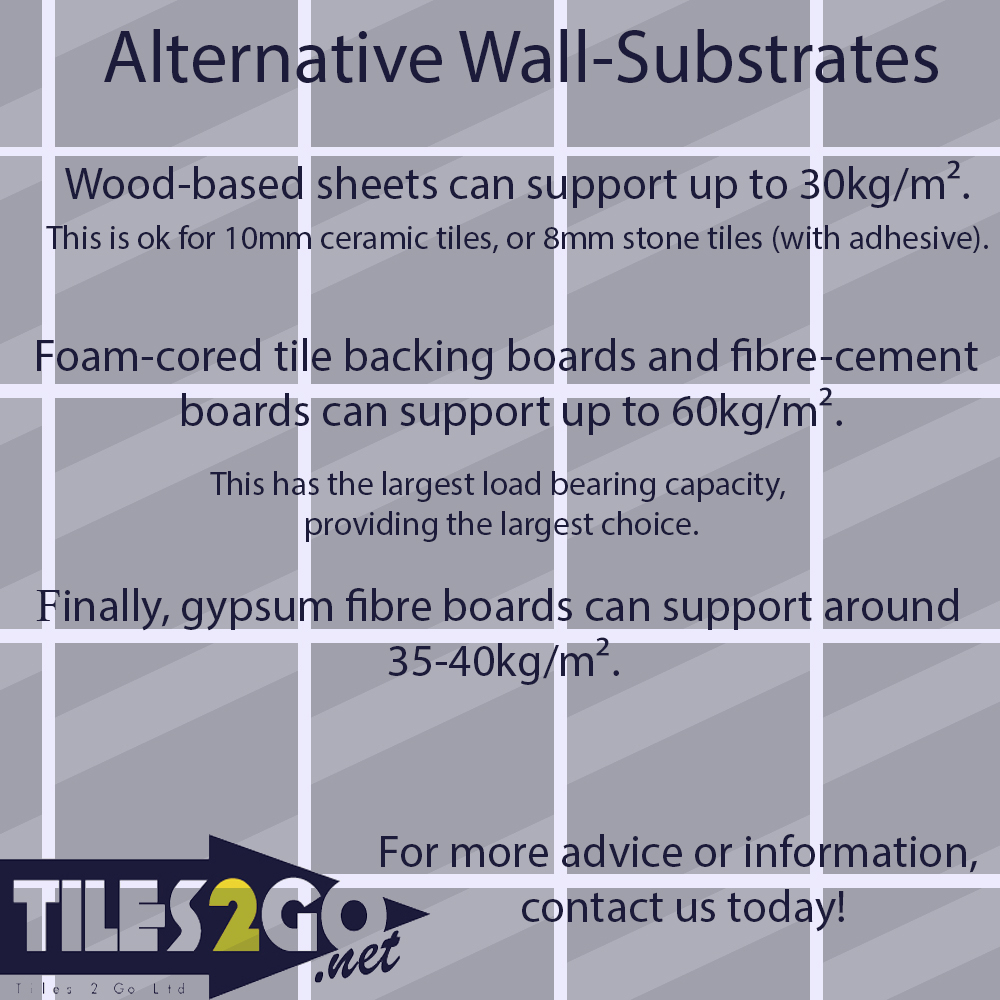Weight ratio it is important to check the weight of your tiles as plaster skim has a 20kg per square meter weight ratio therefore your tiles and adhesive should not exceed these weight otherwise failure could occur due to the skim de bonding from the wall cement adhesive will usually weigh about 4kg per meter squared plus the tile weight.
Max tile weight on plaster walls.
Well 20kg m is perfect for ceramic tiles of around 8mm maximum thickness plus the adhesive or natural stone tiles in 7mm maximum thickness and adhesive.
Gypsum plaster walls with a good quality well adhered and dry plaster as the background for the tiles can support a maximum weight of 20kg m.
The maximum weight of tiling which can be supported by a dry well adhered plaster background is 20kg m.
Bear in mind that gypsum plaster has a maximum weight tolerance of 20kg m 2 and that includes the weight of the tile and the adhesive.
Metal suspension with tile 1 8psf wood suspension with tile 2 5psf plaster 1 8 0psf plaster on wood lath 1 10 0psf plaster on metal lath 1 8 5psf roofing asphalt shingles 2 5psf wood shakes 3 0psf roll roofing 1 0psf asphalt shingles approx 1 4 2 0psf cement asbestos shingles 3 8 4 0psf clay tile add 10psf for mortar 9 0psf.
So what does that mean for tile choices.
This is equivalent to ceramic tiles with a maximum thickness of 8mm plus tile adhesive or natural stone tiles with a maximum thickness of 7mm plus tile adhesive.
If the wall has recently been plastered you should allow 4 weeks drying time before brushing with a stiff bristle brush and priming with dunlop tilers primer diluted 1 1 with water when using ready mixed or two neat coats when using cement based adhesives.
The maximum weight of tiles that can be supported by a dry and well adhered plaster background is approximately 20kg per m.
Walls with this well adhered and dry plaster can support a maximum weight of 20kg m.
You now have a superimposed weight of 60kg each fixing carrying about 22kg.
Tiling onto gypsum plasterboard direct tiling direct onto plasterboard without plaster skim is more stable.
As a result this wall could support ceramic tiles that are around 8mm in thickness or stone tiles that are 7 mm in thickness.
You probably won t be able to see it but if you laid a ruler or straight edge along the wall you would see the plasterboard starting to buckle a bit.
This is equivalent to ceramic tiles with a maximum thickness of 8mm plus tile adhesive or natural stone tiles with a maximum thickness of 7mm plus tile adhesive.









